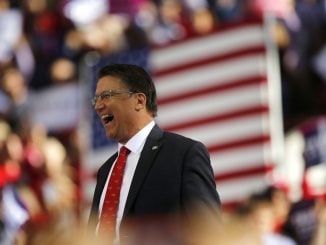
CHARLOTTE Charlotte police released body camera and dashboard videos on Saturday showing the fatal shooting of a black man that triggered protests, but the footage did not show whether the victim was holding a gun.
Family of Keith Lamont Scott, who was killed Tuesday, said the footage showed Scott was not acting aggressively and said the police shooting did not make sense.
But the family, which on Friday released its own video of the encounter, said the two videos do not answer key questions and said they do not know enough now to form an opinion on whether the officer who killed Scott should be charged.
Charlotte-Mecklenburg Police Chief Kerr Putney announced the release of the video Saturday as demonstrators gathered in the city for a fifth day demanding that the public be allowed to see clips of the shooting.
Protesters have rejected police statements that Scott, a 43-year-old father of seven, was holding a gun.
In one of the videos, a dashboard-mounted camera from a police car showed Scott exiting his car and then backing away from it. Police shout to him to drop the gun, but it is not clear that Scott is holding anything. Shots then break out and Scott drops to the ground.
A second body-camera video from an officer does not show the moment of shooting. It shows Scott outside his vehicle before he is shot; it is not clear whether he has something in his hand. The officer then moves and Scott is out of view until he is seen on the ground.
Both videos show Scott moving at a measured pace with his hands at his sides.
Scott’s family and family attorneys said the videos showed Scott walking away from law enforcement at the time he was struck by bullets.
“He doesn’t appear to be acting aggressively to the officers on the scene” Justin Bamberg, a lawyer for the Scott family, told a news conference.
“Unfortunately we are left with far more questions than we have answers,” Ray Dotch, Scott’s brother-in-law, said. “It does not make sense to us how this incident resulted in the loss of life.”
Dotch, who said that he himself is a member of the media, noted that much of the media attention has focused on what kind of person Scott was, whether “he was a good person.
“Of course he was,” Dotch said, but added that that is not what truly matters. “He was an American citizen who deserved better,” he said.
Scott was shot by Officer Brentley Vinson, who is also black.
Police in a statement on Saturday described Scott as backing away from his vehicle. “Officer Vinson perceived Mr. Scott’s actions and movements as an imminent physical threat to himself and the other officers. Officer Vinson fired his issued service weapon, striking Mr. Scott,” the statement said.
Putney said prior to the release of the footage that the videos themselves were “insufficient” to prove that Scott held a gun, but that the totality of evidence did.
“There is no definitive visual evidence that he had a gun in his hand, you can see something in the hand, and that he pointed it at an officer. That I did not visually see in the video,” Putney said. “But what we do see is compelling evidence that, when you put all the pieces together, supports that.”
Police also released pictures, including one of a handgun it says was recovered at the scene and an ankle holster that police say Scott was wearing.
Another lawyer for the Scott family, Charles Monnett, said, “We don’t know enough of the facts to know whether this officer should be charged.”
The police news conference came as demonstrators on Saturday mounted a fifth day of protests. Demonstrators called for the end of emergency measures imposed on the city this week, the removal of National Guard troops and for officers involved in the incident to be prosecuted.
The shooting of Scott was the latest in a series of deadly police encounters across the country in recent years that has raised questions about the use of force by U.S. law enforcement against African-Americans and other minorities.



